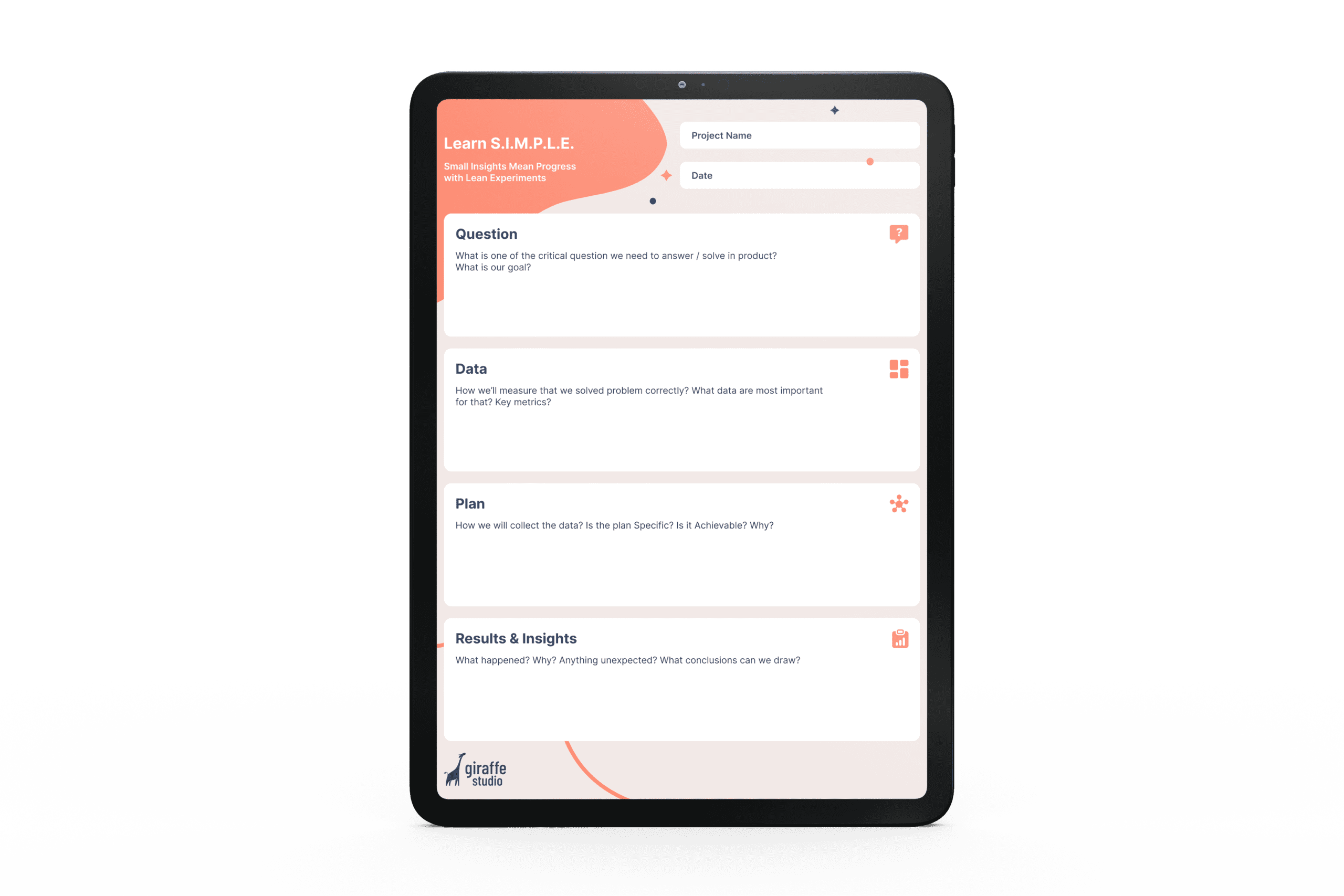Designing Software Experiments: A Simple Template for Product Development
Are you struggling with designing software experiments? Are you wondering where to start and what to focus on? We come with a ready document.
Look no further than the simple template that we have here. Our template has been tested and refined over the years, and we’ve found that it consistently leads to successful experiments that improve our clients‘ products.
Designing software experiments with no trouble
The Simple Template is an effective tool for product development and software experimentation. By using this template, you can easily organize and prioritize your ideas, identify key hypotheses, and create experiments to test those hypotheses. The simplicity of the template makes it easy to use for teams of all sizes, whether you’re a small startup or a large corporation. With its clear structure and focus on testing, the Simple Template can help you make data-driven decisions and avoid wasting time and resources on ideas that don’t work. By incorporating the Simple Template into your product development process, you can improve your chances of success and create products that truly meet your customers’ needs.

So what exactly is the simple template? It consists of four key elements:
1️⃣ problem identification
2️⃣ hypothesis creation
3️⃣ experiment design
4️⃣ results analysis.
Let’s dive into each of these elements in more detail.
1.Problem Identification Before you can begin any experiment, you need to identify the problem that you’re trying to solve. This could be anything from low user engagement to a slow loading speed. Once you’ve identified the problem, you can move on to the next step.
2.Hypothesis Creation With the problem in mind, it’s time to create a hypothesis. Your hypothesis should be a statement that explains how you think you can solve the problem. For example, if the problem is low user engagement, your hypothesis might be that adding more interactive elements to the user interface will increase engagement.
3.Experiment Design Now that you have a hypothesis, it’s time to design an experiment to test it. Your experiment should be designed to isolate the effect of your proposed solution on the problem. For example, if your hypothesis is that adding more interactive elements will increase engagement, you might design an experiment where half of your users see the current interface and the other half see the new interface with added interactive elements. Then, you can compare engagement metrics between the two groups.
4.Results Analysis Finally, it’s time to analyze the results of your experiment. Did your proposed solution solve the problem? Did it have any unintended consequences? Analyzing the results of your experiment will help you refine your hypothesis and design better experiments in the future.
Designing software experiments without guessing
By following this simple template, you’ll be able to design experiments that are more likely to lead to successful outcomes. But there are a few additional tips that can help you get even better results:
- Start small: Don’t try to solve every problem at once. Start with one problem and design an experiment to test your hypothesis. Once you have results, you can move on to the next problem.
- Be consistent: Use the same metrics to measure the success of each experiment. This will make it easier to compare results across experiments and identify patterns.
- Test one variable at a time: In order to isolate the effect of your proposed solution, make sure you’re only testing one variable at a time. If you change too many things at once, you won’t be able to tell which changes had an effect.
Overall, the simple template is a powerful tool for designing software experiments that lead to successful outcomes. By following this template and incorporating the additional tips above, you’ll be able to improve your product and keep your users engaged.











